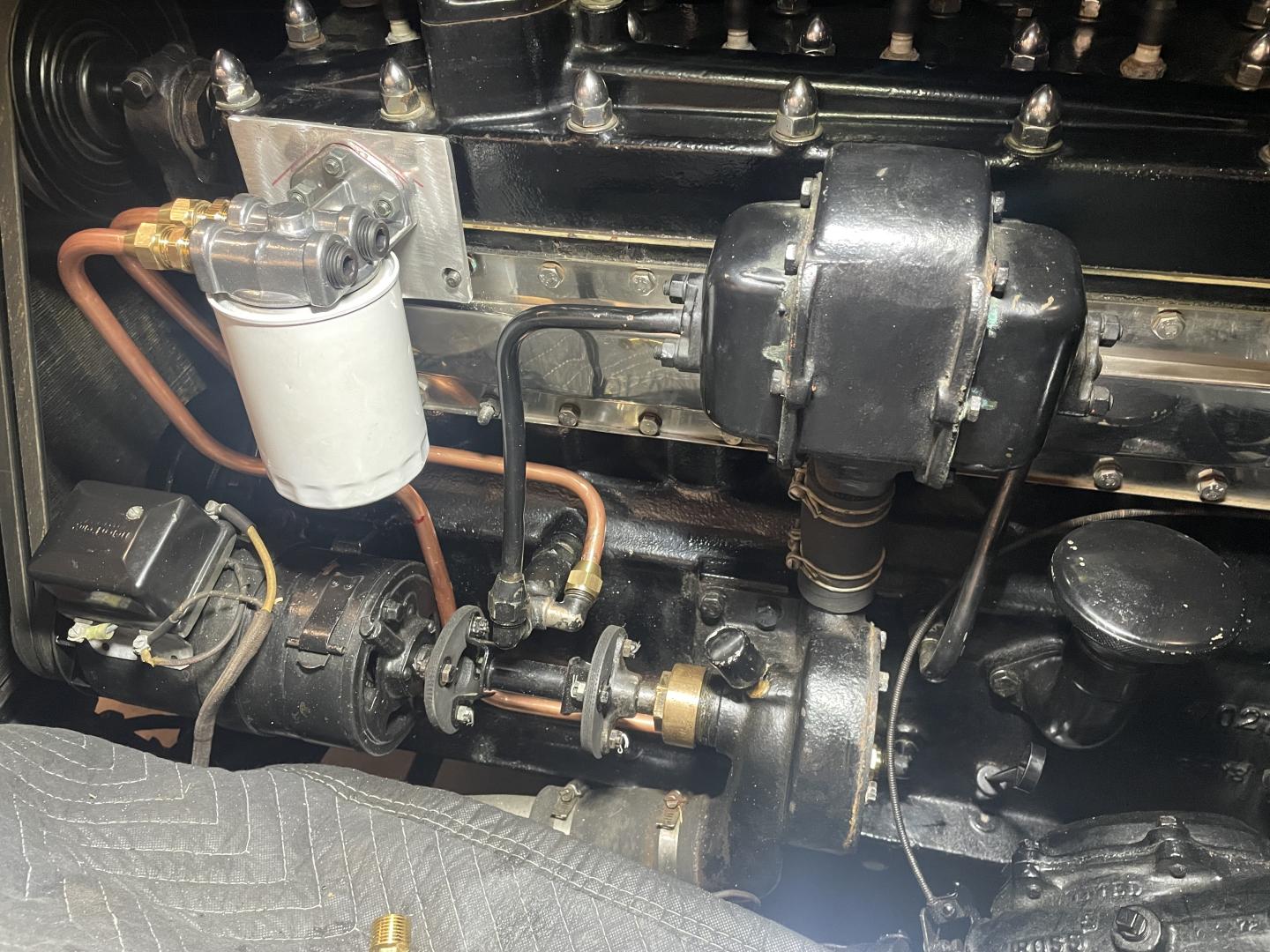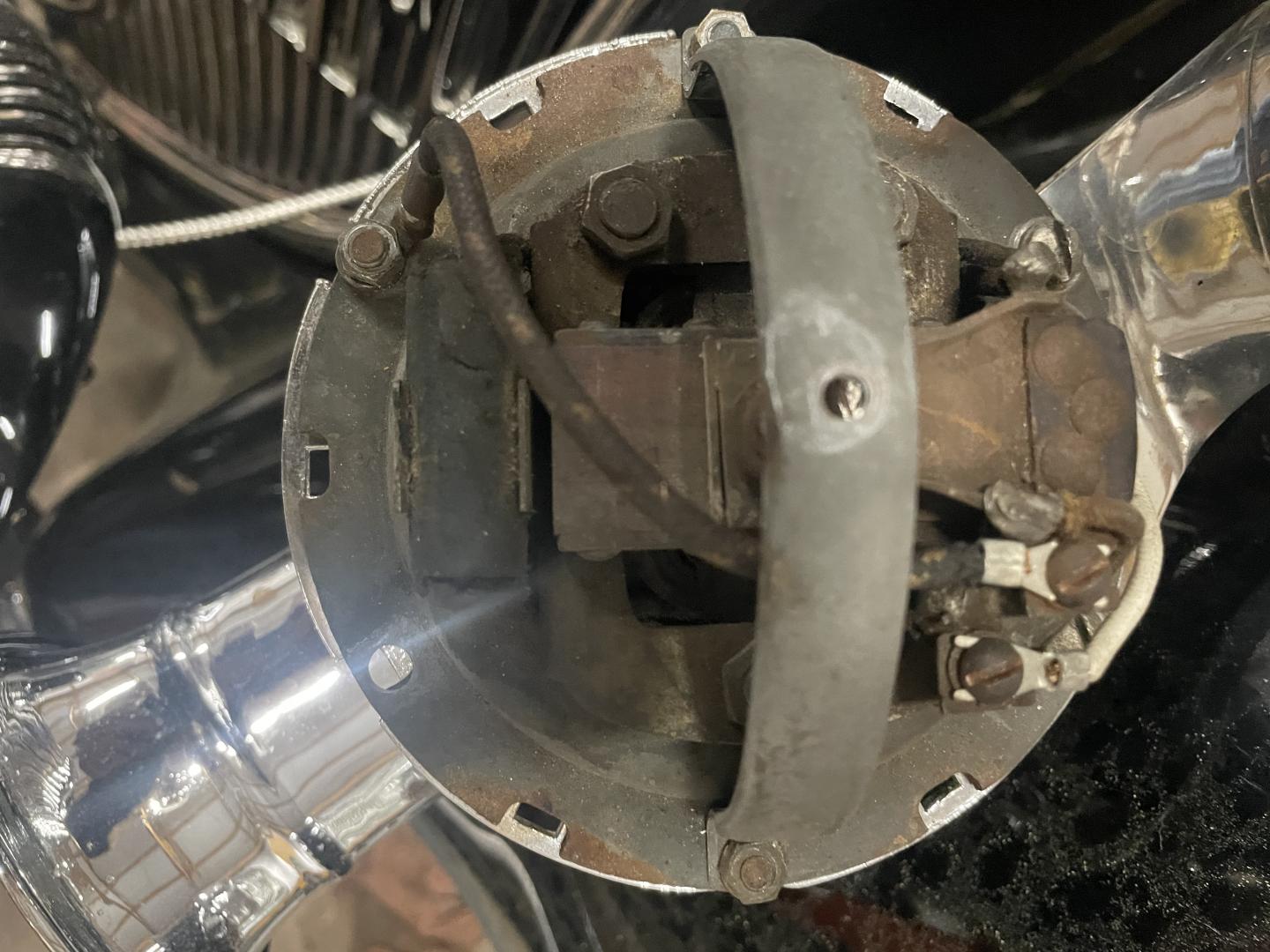- Home
- About Us
- Join/Renew
- Member Benefits
- Member Pages
- Log In
- Help
- Museum Store
Sorry I omitted this: 1 3/4,degrees positive caster.
to add caster with wedges the thick end of the wedge is to the rear, between the spring and axle.
I repeat: I am no expert and I gladly yield to those more knowledgeable and experienced!
I have used steering dampers on two cars and stopped the wobblies. I got simple units intended for older GM 4wd pickups and Jeeps. Fab up simple parts to clamp one end to the steering cross rod and the other to the front axle, arranged so there is no interference. Steer the wheels to straight ahead, mount the damper half extended, then turn the steering lock to lock and make sure the steering hits the stops before the damper reaches end of travel, right and left.
That said: if you have “death wobble” you should check your steering thoroughly for worn or loose parts and make repairs. Don’t take chances with an unsafe car, and risk hurting others or yourself and your loved ones. Make sure your tires aren’t bad; we know we have run some mighty old tires before we knew better. Wobblies can be caused by steering alignment problems; in the case of our cars, check front caster and toe-in.I seem to recall front caster for early 1930s is about 1 3/4 degrees. I have been advised by people much more knowledgeable than I, that spring sag will change this and there are metal wedges available in different degrees that are placed between the spring and axle to correct this. When this is corrected and there are no worn parts, bad tires, etc, death wobble is not a problem. I am experimenting with this now to see if I can get my cars right. I am buying my “caster wedges” 2 inches wide and 2 degrees, 3 degrees, etc.
Thanks. I got the info about the internal bypass from some literature; maybe from the PAS service bulletins; that is all I know.
I have tested my modern setup; seems to be OK and oil pressure is same as before.

Lock n stitch methods are widely accepted and used in industry. If done correctly by experienced technicians the results are dependable, based on my professional experience.
The issue we as hobbyists have is finding that experienced technician at a cost we can afford. I have known of older technicians, some being retired, who would gladly assist hobbyists at an affordable price. Ask around.
Bravo! Looking forward to future progress reports.
<p style=”text-align: left;”>I understand the filter bypass is internal to the filter. The device near the water pump driveshaft is the oil pressure relief.
I also found the word INLET stamped on the top of the filter element. This orients me as to the flow.</p>
I am considering installing a modern filter so that explains my questions.
Thanks, Jim. I will have to think about this.
I ordered the two different pads offered for the Pierce-Arrow from Rock Auto; this based on some advice I found somewhere on the Internet that the price on Rock Auto was lower than the price from Metro. When they arrived I saw they were from Metro.
The longer pair fit my Series 80 perfectly; the arrow on the logo was pointed the wrong direction but I can live with it.
The shorter pad fit the clutch pedal on my ‘35 perfectly and the arrow was correct.
The 2026 meet will be in Carson City, Nevada, in June.
My two horns have different internal parts; looks like one has substitute parts. I do not know enough to be sure. The one I think is correct will sound. This is the internal view:

Our annual meet is the week of June 8 in Eureka Springs, Arkansas. If you bought an ad in the meet tour book you could expose these two cars to a lot of interested people!
They are rare, desirable models.
Looks like both cars were auctioned at Sotheby’s Hershey auction in Fall of 2010; photos still available on their site. Both beauties.
I think that touring car was in Rockefeller’s museum at Petit Jean Mountain in Arkansas. As I recall it was tan and brown. I could be mistaken, but, if it was, it’s the first Pierce-Arrow I ever saw in person.
Hi, Jim. I am impressed with the products GrainIt offer; I bought a kit of supplies for my project. It just didn’t match the wood window surrounds in my car at all.
For the 1931 Series 43, only the top bar of the pressed-steel dash, just below the windshield, is grained.
Thanks, Bob!
I reply hoping it may help you. In the 1970s my Dad bought a fairly heavy-duty cargo trailer for the farm, and it had vacuum/hydraulic brakes. There was a vacuum booster/ master cylinder mounted on the tongue of the trailer. There was a rubber hose with a quick-connect that took engine vacuum from a controller on the truck to the assembly on the tongue and I assumed that it applied the trailer brakes in proportion to the braking in the truck. The brakes on thevtrailer were almost identical to those on a 3/4 ton pickup, just hydraulic drum brakes.
This trailer was built in Bryan, Texas, by a company named “Gooseneck” which I think is still in business. Perhaps there are parts you can use from this industry.
Maybe Loctite the threads?
<p style=”text-align: left;”>According to some Stromberg instructions I have read, it is pretty-much expected to need a little choke during the warm-up so with further checks like the ignition timing I may be normal. I suspect my car’s carb heat valve may be stuck closed as well.
As for avgas: as Dave stated, it is high quality and resists deterioration during storage. It is made with a refining process somewhat different from motor fuel. There is obviously no need for high-octane nor for lead in a Pierce-Arrow.</p>
Hi, Carl. Fuel without added ethanol is easily available here. I use it or 100 octane LL from the airport when I can.
